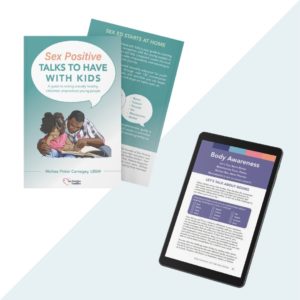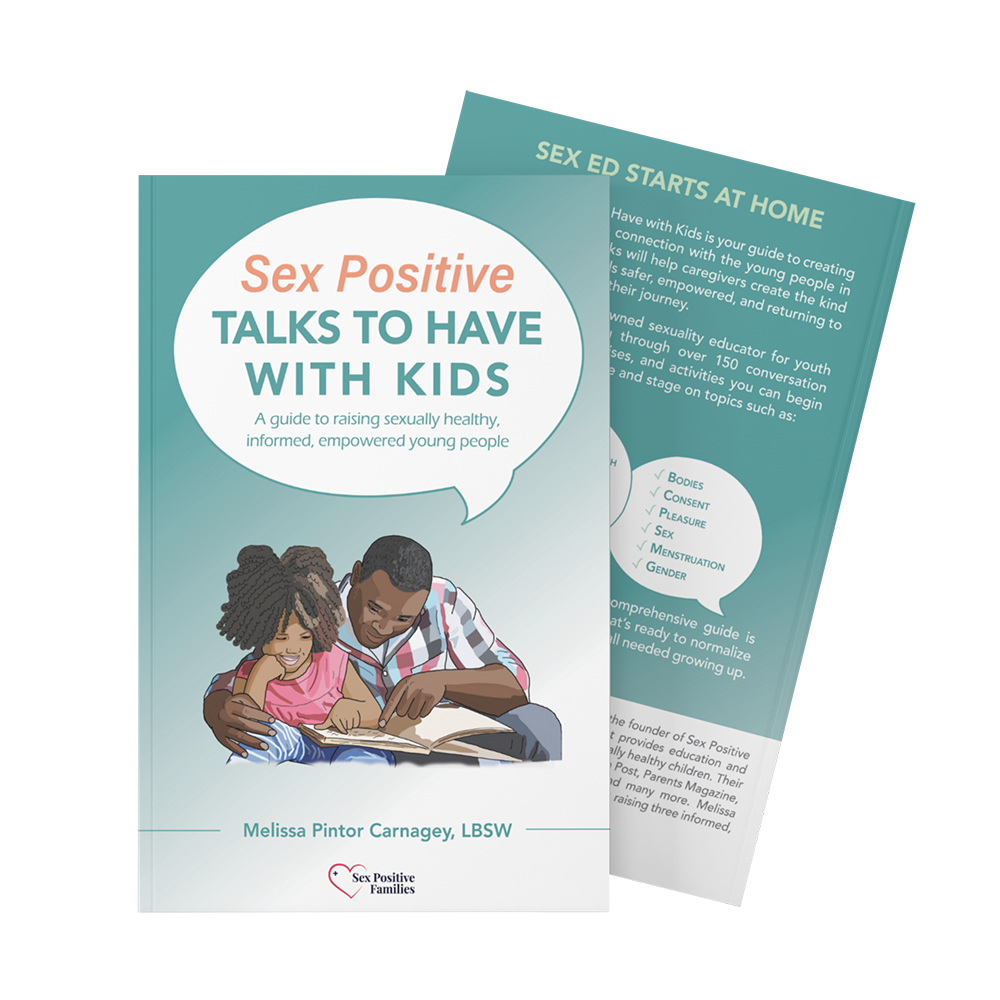-By: Melissa Pintor Carnagey, LBSW-
Growing up, were your boundaries respected by others at family gatherings during the holidays?
This time of year can present many challenges for families when it comes to understanding and respecting boundaries and consent. Particularly for children, who are often expected to look, behave, and interact in ways that are deemed acceptable by traditions that can quickly contradict even the most consent-conscious homes.
How can parents ensure the consent lessons and teachable moments continue year-round? Here are six ways parents and caregivers can honor consent and bodily autonomy with the young people in their world this, and every, holiday season.
Let kids decide how they wish to interact with others
Before the buzz of the gatherings begin, talk with your child about the options that are available to acknowledge people in a space. Gestures such as waves, smiles, and a simple verbal acknowledgement can be great options to greet others without involving touch. If hugs or kisses are not desired, other ways to physically connect could be a high five, fist bump, tapping elbows, or a hand shake. Either way, you want to make it clear to your child that they get to set their body boundaries and other people should respect them. Likewise, you want to ensure they are prepared to receive the boundaries of others without coercing or overstepping. A great book to help children learn and talk through these concepts is Can I Give You a Squish by Emily Neilson.
When children know they have choice and the power to lead how they wish to interact with others, no matter who that person is in their life, they get the chance to practice life skills that support bodily autonomy, safety, and interpersonal communication. If a family member is unwilling to honor the boundaries and consent of a child, this is where a parent needs to step up, address it, and advocate for respect on their behalf. If you find yourself unsure of how best to handle those encounters, check out our previous article When Adults Aren’t Respecting Your Child’s Consent.
Ask permission before snapping photos
If a child is old enough to knowingly pose for a photo, they are aware of what is going on and should be given the opportunity to willingly participate (or not) in being photographed. This also goes for considering where or with whom to share their photos. If a child is not verbal, it’s important to pay attention to and show respect for any body language they exhibit that demonstrates discomfort or a desire not to have their photo taken.
These elements are great practice for a lifetime ahead of participating in digital imagery and the type of awareness we want to instill in them to have respect for privacy, safety, and consent. Leading in this way also models for them the awareness of others’ autonomy that they should respect when they get behind the camera.

Keep mealtime pleasurable not a power struggle
Holiday times often involve an influx of social interactions and a wider variety of foods than children may always have available to them. This can contribute to anxious or excited feelings for anyone involved, especially children, so it’s better to keep expectations fair and realistic. Let them graze and find pleasure in their food experience and seasonal favorites. Allow them the space to communicate their wants and limits without the use of force, coercion, or conflict.
This means steering clear of phrases like “come on, one more bite” or “but you ate broccoli last time!” or “you’re not leaving this table until you finish your plate.” A child knows when they’ve had enough because their body sends them cues. We want them to grow to trust their body and have it respected by others. Check out this discussion on intuitive eating to learn more about how to make this happen in your home.
Clothes are an opportunity for self-expression not control
Power struggles can also present themselves when it comes to deciding outfits a child or teen will wear during holiday gatherings. These moments are an opportunity to support a child’s self-expression, individual comfort, and bodily autonomy. The earlier we involve children in the process of selecting the clothes they wear, and how they like to wear them, the more consistent the message is that their body is theirs and not for others to control or dictate.

If a child is old enough to communicate (verbally or non-verbally) their preferences or needs, they should be involved in the decision about what goes on their body. Whether it’s a festive garment, accessory, or a coat, talk together ahead of the events about the available options and ideas you both have, so it isn’t a last minute stressor or unwanted surprise. If the garment is for health or safety reasons, talk that through together and remain affirming to their feelings and ideas. Consider how you will involve them in the shopping or selecting of their own clothing, so they have clear buy-in to the experience. Remember, the clothes they wear are theirs; our best role is to help them feel safe and confident in them. And if something is bought for or given to a child to wear, and they don’t like it, believe them and explore alternatives together.
We can also keep ourselves available, versus dismissive, if a child requests an adjustment to something they have on (ex. “This sweater is itchy!” or “My coat is making me feel hot!”). Check-in and problem solve the situation together. Our tone and body language can influence how our reactions are received, and the more collaborative and patient we are with the communications, the less likely they are to dissolve into conflict or stressful power struggles.
A screaming child on Santa’s lap is not cute, it’s unsafe
We’ve all seen the photos before of a horrified looking child sitting on a smiling Santa’s lap.
Some of us have been that horrified child.

What early messages are we sending by forcing a young person onto the lap of or to be near a stranger, simply for a photo op? Creating a safer, consent-conscious next generation requires us to re-evaluate norms and traditions such as this. If a child loves the idea of sitting on Santa’s lap, awesome. Let it be their choice, and a moment they can lead in their way and cherish, but if they’re a ‘no’ then it should not be something they are forced to do. Even if they were a ‘yes’ at first, but got into the situation and suddenly change their mind. They need to be allowed to do so, and respected in their decision. This is how we send consistent messages about consent in their early years. And if they’re not verbal, pay attention to and respect any cues their body may send while in the company of others. Be prepared to step in if it feels compromised at any point in the interaction.
A child’s sense of safety and their understanding of consent is far more important than a photo op.
Be the kind of home your adult child returns to as their whole selves
Respecting a child’s autonomy should be a practice we continue year-round, into their adulthood. When we remember that the children we raise are not property, they don’t owe us for their existence, and we are not entitled to their body, affection, or control of their outcomes- it better allows us to see and respect them as whole and separate humans.
If we’ve done well in creating a safe and supportive home base where they can thrive in their authentic selves as they grow, they will be more likely to return home on their own accord. With loved ones, and without dread. That’s one measure of truly happy holidays.
Check out our resources on Consent.
 For a guide made just for parents and caregivers to tackle sexual health talks at every age and stage, check out our bestselling book Sex Positive Talks to Have With Kids: A guide to raising sexually healthy, informed, empowered young people.
For a guide made just for parents and caregivers to tackle sexual health talks at every age and stage, check out our bestselling book Sex Positive Talks to Have With Kids: A guide to raising sexually healthy, informed, empowered young people.

Sex Positive Talks to Have With Kids is the bestselling guide to creating an open, shame-free connection with the young people in your world.
It’s an inclusive, medically accurate, and comprehensive resource that walks you through over 150 conversation starters, reflection exercises, and activities you can begin implementing at every age and stage to normalize sexual health talks and become the trusted adult we all needed growing up.

